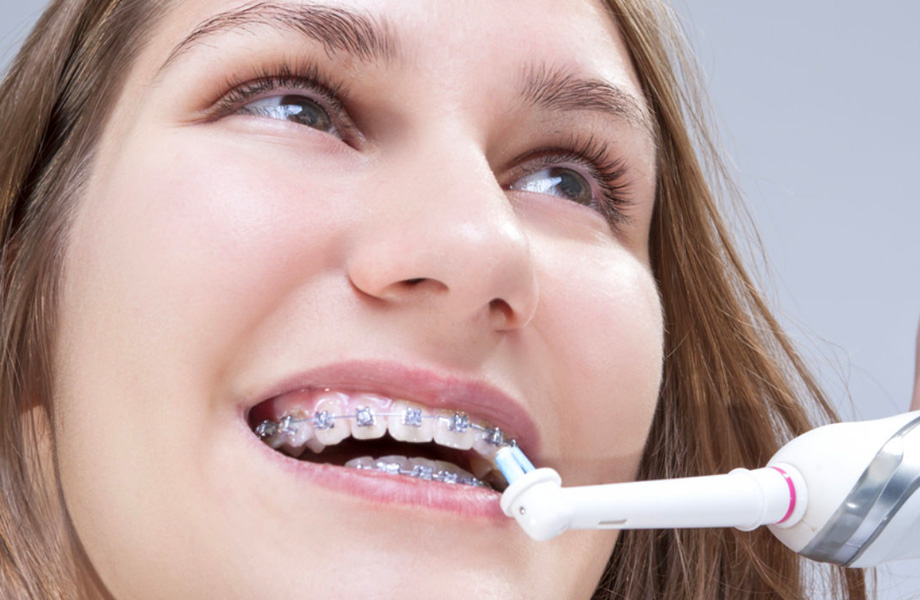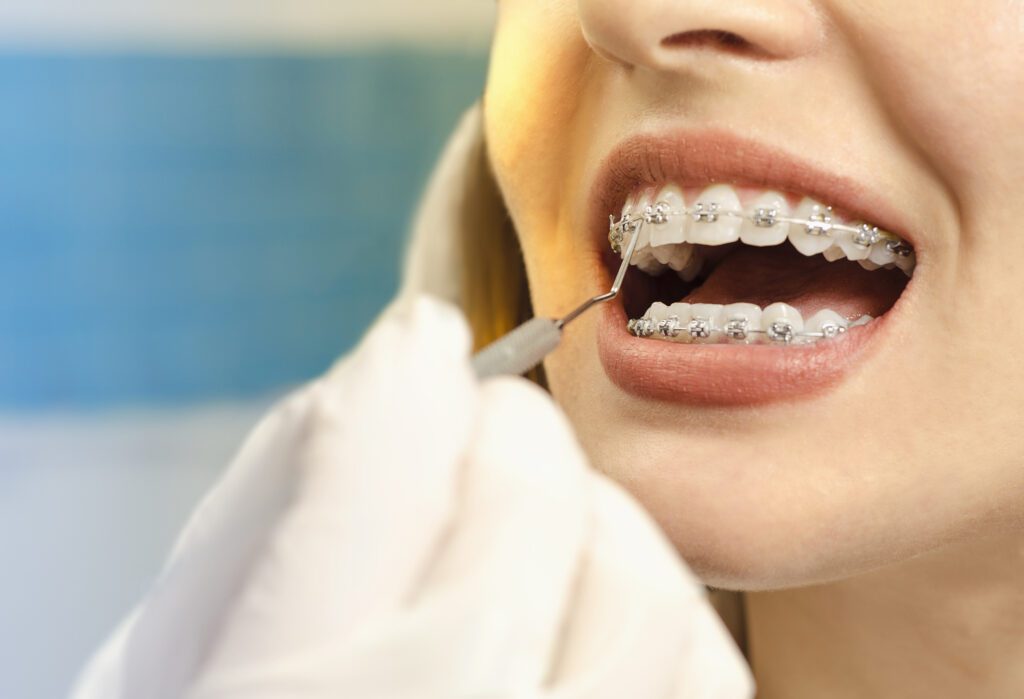
Braces 101: Everything You Need to Know Before Getting That Perfect Smile
What if braces could be the simple step to transform your smile and boost your confidence? For many, braces might feel like a mix of excitement and hesitation, but they’re more than just wires and brackets. They’re a path to healthier teeth, a better bite, and the kind of smile that lights up a room.
Braces aren’t just for kids anymore—people of all ages are jumping on board, from teenagers eager for straighter teeth to adults finally getting the smile they’ve always wanted. And with so many options available today, from traditional braces to nearly invisible aligners, it’s easier than ever to find the right fit for your lifestyle.
Understanding the process is key to making the journey smoother and less intimidating. Whether you’re just curious or seriously considering them, this Braces 101 guide will walk you through everything you need to know to take that first step confidently.
Understanding Braces
When it comes to braces, knowing how they work and the options available can help you feel more confident about starting the journey.
How Braces Work
Each part of the braces plays a role in this process. The brackets are small pieces that are bonded to your teeth, and they hold the archwires in place. The archwires are what apply the actual pressure, while elastics or rubber bands are sometimes added to adjust the movement further. Together, these components gradually reshape your smile with precision.
Types of Braces
Today’s braces aren’t one-size-fits-all. Here are four popular options:
- Metal Braces
- These are the classic braces most people recognize. They’re strong, effective, and able to tackle a wide range of alignment issues. While they’re more noticeable, they get the job done efficiently.
- Ceramic Braces
- These braces work like metal ones but are made from a tooth-colored material that blends in better. They’re perfect for anyone who wants a less obvious option without losing effectiveness.
- Lingual Braces
- If keeping your braces hidden is a priority, lingual braces are a great choice. These are attached to the back of your teeth, making them invisible from the front. They may take a little time to adjust to but are ideal for those focused on aesthetics.
- Clear Aligners (e.g., Invisalign)
- These removable plastic trays are nearly invisible and allow for more freedom with eating and cleaning. They’re best suited for people with mild to moderate alignment needs.
Benefits Beyond Aesthetics
Braces don’t just make your teeth look good—they also make them healthier. Proper alignment reduces the risk of cavities and gum disease by making your teeth easier to clean. A straighter smile can also improve your bite, making it easier to chew and even improving speech clarity in some cases.
With so many options and benefits, braces truly are an investment in both your oral health and your confidence.
The Process of Getting Braces
Getting braces isn’t as complicated as it might seem—it’s a straightforward process that starts with planning and ends with a confident smile.
Initial Consultation
Your journey begins with a visit to the orthodontist. During this first appointment, they’ll take a close look at how your teeth are aligned, how your jaw fits together, and whether your bite needs adjustment. To get the full picture, they’ll use tools like X-rays, photos, and molds of your teeth. This helps them create a personalized plan to give you the best results.
The Day of Installation
On the day your braces go on, the orthodontist will start by giving your teeth a thorough cleaning. Once they’re completely dry, they’ll place small brackets on each tooth using a special adhesive. These brackets act as the foundation for the braces.
Next comes the archwire—the thin wire that connects all the brackets. This wire is gently threaded through the brackets and secured with tiny elastics. In some cases, additional rubber bands may be added to guide the teeth into position. The entire process usually takes about 1-2 hours, and you’re officially on your way to a straighter smile!
Adjustments and Follow-ups
Braces work gradually, so you’ll need to visit your orthodontist every 4-6 weeks for adjustments. These appointments are quick but essential. The orthodontist will tighten the wires, change elastics, and ensure your teeth are moving as planned. It’s normal to feel mild discomfort for a day or two after these adjustments, but it’s all part of the process.
Treatment Duration
Most people wear braces for 18-24 months, but the exact timeline depends on factors like how misaligned your teeth are and how well you follow your orthodontist’s advice. Skipping appointments or not wearing recommended elastics can extend the treatment time, so staying on track is important.
Every step of the braces journey brings you closer to a healthier, more confident smile. With patience and care, the results will be worth it!
Living with Braces
Adjusting to life with braces takes a little effort, but the right habits can make the process much easier and even enjoyable.
Daily Care Routine
Taking care of your teeth is even more important when you have braces. Brushing and flossing regularly help prevent plaque buildup and keep your gums healthy. Use a soft-bristle toothbrush and fluoride toothpaste to clean around the brackets and wires.
Flossing might feel tricky at first, but tools like floss threaders or water flossers make it much easier. These are designed to slide between your teeth and braces without causing damage.
When it comes to food, a few small changes can make a big difference. Avoid hard, sticky, or chewy snacks like caramel, popcorn, and nuts since they can break brackets or get stuck in your braces. Instead, go for softer foods like pasta, yogurt, or bananas that are gentler on your teeth.
Dealing with Discomfort
It’s normal to feel some soreness after getting braces or during adjustments, but you don’t have to suffer through it. Orthodontic wax can protect your cheeks and lips from rubbing against the brackets. For soreness, over-the-counter pain relievers, a cold compress, or a simple saltwater rinse can bring quick relief.
Protecting Your Braces
If you play sports, a mouthguard is your best friend. It protects both your teeth and braces from unexpected hits or falls. And if something does break—a bracket comes loose or a wire pokes out—don’t wait. Call your orthodontist right away to fix the issue and keep your treatment on track.
Social and Emotional Adjustment
It’s natural to feel self-conscious when you first get braces. But remember, you’re not alone—millions of people wear braces every year. Focus on the end goal: a healthy, confident smile. If you feel awkward, try sharing your experience with friends or family. Embracing the process can help boost your confidence while you adjust.
Living with braces doesn’t have to be overwhelming. A little care, patience, and positive thinking will take you far on your journey to a perfect smile!
Alternatives to Traditional Braces
If traditional braces don’t feel like the right fit for you, there are plenty of other options available that can still help you achieve a straighter smile. Here are some of the most popular alternatives:
Clear Aligners
Clear aligners, such as Invisalign, have become a favorite for many people. These custom-made trays are removable, nearly invisible, and easy to maintain. Since they don’t have brackets or wires, you can enjoy your favorite foods without worrying about damage. They’re also simple to clean and allow you to brush and floss your teeth as usual. However, they’re best suited for mild to moderate alignment issues, so they may not work for everyone.
Dental Veneers
If you’re looking for a quick way to improve the look of your teeth, veneers might be the answer. These thin shells cover the front surface of your teeth, creating a perfect appearance without actually moving your teeth. Veneers are ideal for fixing small gaps, discoloration, or minor imperfections, but they don’t address functional alignment issues.
Lingual Braces
Lingual braces work just like traditional metal braces, but with one key difference—they’re attached to the back of your teeth, making them almost impossible to see. They’re a great option for anyone who wants discreet treatment. Keep in mind, though, that they may be harder to clean and take some time to get used to.
Self-Ligating Braces
These braces look similar to the traditional kind but use a special clip system instead of elastic bands to hold the wires in place. This reduces friction, which can make adjustments faster and more comfortable. They’re a solid choice for anyone looking for a modern twist on classic braces.
Each option has its pros and cons, so it’s a good idea to talk with your orthodontist to find the best fit for your needs and lifestyle.
Financial Considerations
Let’s face it—getting braces is an investment. Understanding the costs and your payment options can make the process easier to plan for.
Cost of Treatment
Braces can cost anywhere from $3,000 to $8,000, depending on how complicated your case is and which type you choose. Traditional braces are often more affordable, while options like Invisalign or lingual braces may come with a higher price tag.
Insurance Coverage
The good news is that many dental insurance plans cover a portion of orthodontic treatment. Be sure to check your plan’s details, such as annual limits and whether your orthodontist is in-network. This can help lower your out-of-pocket expenses significantly.
Payment Plans
If insurance doesn’t cover everything, most orthodontists offer flexible payment plans. These plans allow you to break down the cost into monthly installments, making treatment more affordable. Don’t hesitate to ask about financing options during your consultation.
Cost-Saving Tips
There are also a few ways to save on braces. If you have a flexible spending account (FSA) or health savings account (HSA), you can use those funds toward your treatment. Some dental schools also offer discounted orthodontic services, so it’s worth exploring options in your area.
Final Thoughts
Braces 101 isn’t just about getting straighter teeth—it’s about building a smile that reflects your confidence, health, and personality. Whether you’re just beginning to explore your options or ready to start treatment, understanding the process, types of braces, and lifestyle adjustments is key to making informed, empowering choices.
At Elite Orthodontics, we’re here to guide you every step of the way. Our experienced team offers advanced orthodontic solutions tailored to your lifestyle—whether you’re interested in traditional braces, clear aligners, or discreet lingual options. We combine expert care with a warm, personalized approach, so you can feel confident and supported throughout your journey.
With flexible financing, modern technology, and a commitment to outstanding results, Elite Orthodontics is more than a clinic—it’s your partner in achieving a smile you’ll be proud to share.
Take the first step today with Elite Orthodontics—because your best smile is waiting.
Tags: Braces 101
